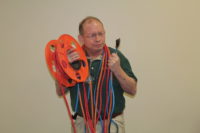Restoring Success: Receiving Your Receivables
Every collection has a twist, turn and multiple parties involved each with their own standards, processes, expectations, forms, etc.

Cash flow management is a discipline that every restoration company must master. Although every organization in existence must manage cash flows and receivables, there are complexities that are unique to our industry. Because it is not uncommon to fund portions of jobs or entire projects, the busier you get and the less time that you have can make this even more of a challenge to proactively manage.
“The check is in the mail.”We all know that saying, but when we hear that in our business, the response should be: “When was the check mailed? Where is it being sent? Whose name is on the check?”
Every collection has a twist, turn and multiple parties involved each with their own standards, processes, expectations, forms, etc. Every insurance company will have a unique method of which they distribute payment. Bank escrows must be managed in accordance with that particular bank’s rules. The property owner will have expectations. Commercial accounts will have protocols for vendors to follow and requirements. Don’t forget, if you work with a locality that requires an escrow to be maintained until repairs are complete, you may have to manage that as well. On top of getting all these parties to put the “check in the mail,” you have to understand the flow and procedures for the varying types of services you provide. For example, payments on emergencies vs. structure repairs vs. contents will all flow a bit differently.
The following is a list of considerations to review and evaluate to help your organization get the check from the mail into your bank account.
1. Maintain company procedures and standardized templates of letters, contracts and follow ups for your collection process. Make it part of the company culture that collection efforts are to be done proactively according to the guidelines established.
2. Always know where the money is located and what it represents. A simple and extreme example for illustration purposes is a $10,000 repair. At any given point, you should know where and what the $10,000 is and represents so that you can collect it properly.
3. Once we know where the money is located and what it represents, we need to know the series of actions that need to take place to get the funds flowing. In addition to estimates, invoices and contracts, you made need to consider the following:
a. Certificates of Satisfaction (COS)
b. Inspections
i. You need to schedule inspections for the release of escrow funds.
ii. Follow ups on inspection reports.
c. A variety of other unique forms and signatures made be required to get funds released from any given point.
4. Be organized: It is critical to keep your information and process organized so that you can manage the steps proactively. Each insurance carrier, bank, etc. will have varying requirements that you need to be aware of and follow.
5. Documentation: Because it is necessary to speak to multiple parties from multiple organizations regarding any given collection, it is imperative that names and communications are well documented.
6. Proactive: There is that word again… proactive management of the process is key, including the follow up activities from each step. Example:
a. A final inspection happens on January 3.
b. It takes 7 days for the bank to receive the inspection report – follow up and confirm with the bank, receipt of the inspection report.
c. It takes 10 days for the bank to release payment – follow up and confirm the release and calendar the anticipated arrival date of the check.
7. Lastly, regardless of the verbiage in your contracts, the checks once received could be made payable to multiple parties (including the restoration company), be prepared to get the proper endorsements by knowing what to expect when the check is received.
There are a variety of legal requirements that vary by state and requirements that vary on the local level. I encourage you to have your contracts and collection procedures reviewed by an attorney with expertise in contractor law in your area.
It is always a good time to review your collection procedures to ensure that your checks go from the mail into your bank account.
Looking for a reprint of this article?
From high-res PDFs to custom plaques, order your copy today!







